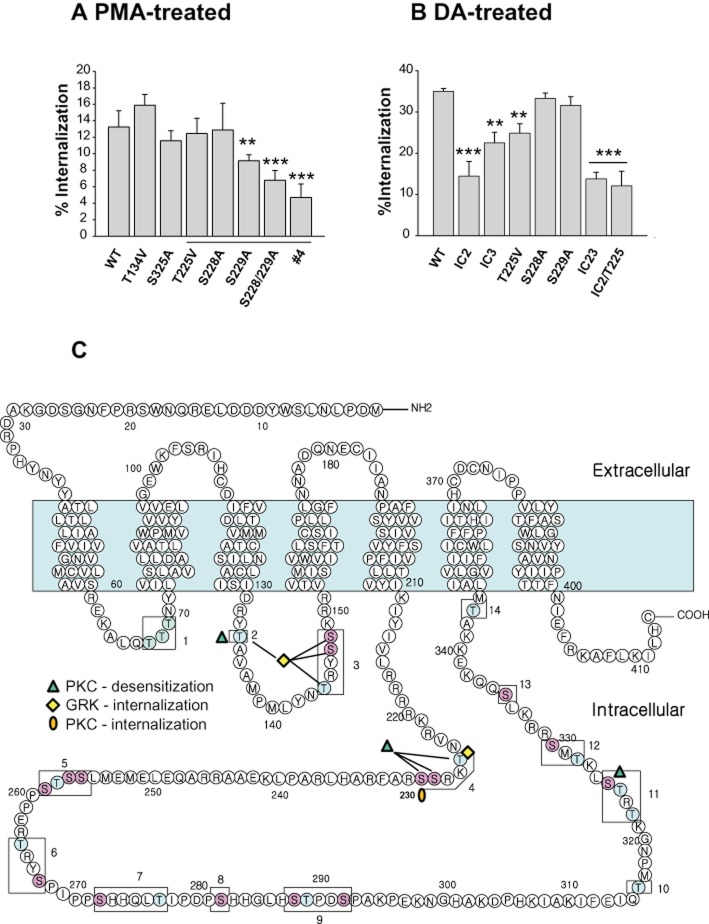Figure 4.
Determination of S/T residues responsible for homologous and heterologous internalization of D2 receptors. (A) Identification of S/T residues responsible for the PKC-mediated internalization of D2 receptors. Cells transiently transfected with wild-type or each S/T mutant of D2 receptor were treated with 1 μM PMA for 2 h. The underlined columns represent individual or combined mutations of S/T residues in mutant-#4 (T225/S228/S229). Receptor expression levels were maintained at around 1.2–1.5 pmol·mg−1 protein. **P < 0.01, ***P < 0.001 compared with wild type. (B) Identification of S/T residue responsible for the homologous internalization of D2 receptors. Cells transiently transfected with wild type or each S/T mutant of D2 receptor were treated with 10 μM DA for 1 h. Receptor expression levels were maintained at around 1.2–1.5 pmol·mg−1 protein. **P < 0.01, ***P < 0.001 compared with wild type. (C) Diagram showing the putative phosphorylation sites responsible for GRK- and PKC-mediated regulation of D2 receptors. The shaded region represents the transmembrane region. Site-directed mutagenesis was performed to change the designated serine (S) or threonine (T) residues within the cytoplasmic loops (#1–14) into alanine or valine residues respectively. T134, T225/S228/S229, and S325 are responsible for PKC-mediated desensitization of D2 receptors. S/T residues located within the second intracellular loop and T225 are responsible for agonist-induced internalization of D2 receptors. S229 is responsible for PMA-induced internalization of D2 receptors. More detailed information on the mutants is given in Table 1.

